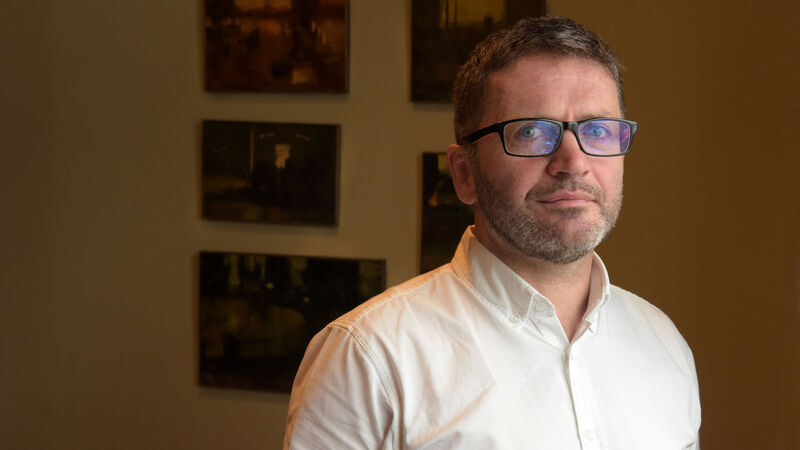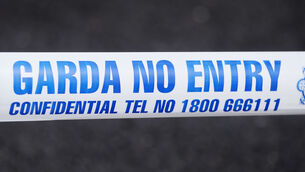Public DNA samples to be used in identifying children buried at Tuam

Director of the Tuam excavation Daniel MacSweeney said he will launch an appeal to ask people who suspect they may have close relatives in the grave to come forward and give their DNA sample in a confidential process. Picture: Moya Nolan
People will be allowed to give DNA samples to help identify 796 children believed to be buried on the grounds of the former mother and baby home in Tuam, the director charged with excavating the site has said.
The Institutional Burials Act 2022 will allow for the grounds of the former mother and baby home, where hundreds of children are believed to be buried, to be excavated.
The children died in appalling conditions in the institution for unmarried mothers, which was run by the Bons Secours nuns who between 1925 and 1961.
Cork native Daniel MacSweeney, who was placed in charge of the excavation of the site last year, told the that he hopes to excavate the whole site within the grounds of the Dublin Road housing estate in Tuam, including the playground and surrounding areas.
Over the next few months, he will launch an appeal to ask people who suspect they may have close relatives in the grave to come forward and give their DNA sample in a confidential process.
He said both and his team of seven, which includes archaeologist Dr Niamh McCullough, who worked on the test excavations at Tuam in 2016 and 2017, are making “good progress” to date.
“The way the legislation is structured, we will be dealing with families who are close relatives. We have to do a public information campaign, that is about awareness raising. We cannot knock on the doors of families, they have to come to us. There are families who are in the public domain, but there are families who are not.
“There is a right to privacy for the family versus public interest. The legislation says a family member contacts us and all correspondence is confidential.
"The first question is are you one of them? (eligible family member). The second question is, why do you reasonably believe that you have a relationship with one of the children?
“There has to be some evidence. There are regulations that are still being put together about how exactly that will be done so we are waiting for them to come out.
“Is there a public document, such as a birth certificate or you can provide an affidavit in the absence of those documents”.
The law allows for an identification programme within the intervention which includes an administrative scheme.
This permits a family member to give a DNA sample now, because of “exceptional circumstances”, such as age and a change in health.
“However, that doesn’t mean that DNA will be included in the process because we are getting into the identification process then” said Mr MacSweeney.
“The second thing is, in the act is, if you are an eligible family member, you must provide a letter from the other family members to say they don’t object (to the DNA sample).
“If there is an objection from the family the director is authorised to adjudicate. Within that those who are closest to the child, the mother, the siblings - their opinion would prevail over a niece or nephew.
“If a grandniece comes to me believing someone had a baby in Tuam, I have to go to the granny, or the next person.
“If there is an eligible family member who cannot be contacted, I’ve to make reasonable efforts to make contact with them” he said.
Mr McSweeney said he is still assembling his team which will depend on the findings of the scoping report, which is due to conclude soon.
“On the basis of that” he said “We’ll hire a design engineer, a surveyor people to figure out how exactly we work on this site because it is really complicated.
“For example, we will divide the area up into possibly four sections. So, if we remove earth from here, it will have to be moved and that will be a mountain of earth.
“But the earth has to be moved back before we do the next section. We have to work with the two laneways coming into the site”.
He said the area will not be closed off because residents live there, and that he will be keeping them informed.
“We want to do this work with the least amount of disruption possible, so that is one of the things we have asked the engineers to look at” he said.
“The expert technical group (who did test excavations on the site in 2016 and 2017), they thought that this entire thing could take two years, so I don’t want to block off this area for two years. So, we will do it in sections.
“We need to have a plan on how we will do this. The scoping engineer will lead to a design engineer will lead to a building contractor who will start this work.
“A lot of this is outside my control because there aren’t a lot of building contractors who are looking for work at the moment. This is quite specialized.
“The second thing is a lab; we have been working with the OPW in Galway I’ve seen five places in Tuam that can be a lab and we are close to finalising that.
“We need to have a place where the remains can be respectfully and carefully placed.
“The staff will also have to be based there too. The third thing is an IT system, nobody sells an IT system for this.
“One option is to go and ask someone to build something but that would take years, so there are organisations who have done this type of work in the past and we are talking to them.
“The fourth thing is the team. To start the excavation, we need a site team, that’s an osteoarcheologists, and forensic archaeologists, but I want clarity about the engineers before I do that.
“We need an office to manage all of this, we are subject to audit, we need to have progress on all of these before we start the excavation”.
An advisory board to the Director is also in place, which is chaired by former Coroner Brian Farell and the board has met twice so far this year.
Mr MacSweeney has been given a two- and half-year contract, with a budget of €7.5million, and said he doesn’t believe much of the budget has been spent so far, but it will cover salaries to come.
He also anticipates the work will go beyond his current contract but will keep the government updated.
He said he has spoken with John Hill, the Chief Investigator of the Independent Commission for the location of victims remains (the disappeared) “So that is the closest to this in Ireland.
“He told me early on, never make a promise you cannot keep, to families and to the residents. These are all the things that need to happen. Once we have clarity we will talk to the residents. We have to listen to them as well”.
A lab building he said will be divided into sections including a preparation area, a recovery part, and an analysis part.
“How long that will go on will depend on what we find” he said. “We have to hire specialist staff too.
“There is a lot of genetic information that can be useful, but we have to set up the lab and the systems” he said.
“I think we are making good progress, what is so clear, is the complexity of it, it’s not about digging up remains. We have good people on board”.
A public awareness campaign will get underway in the next few months.










